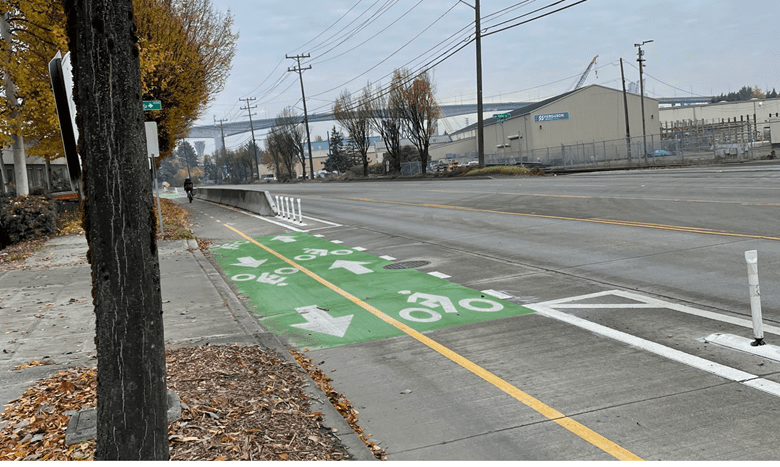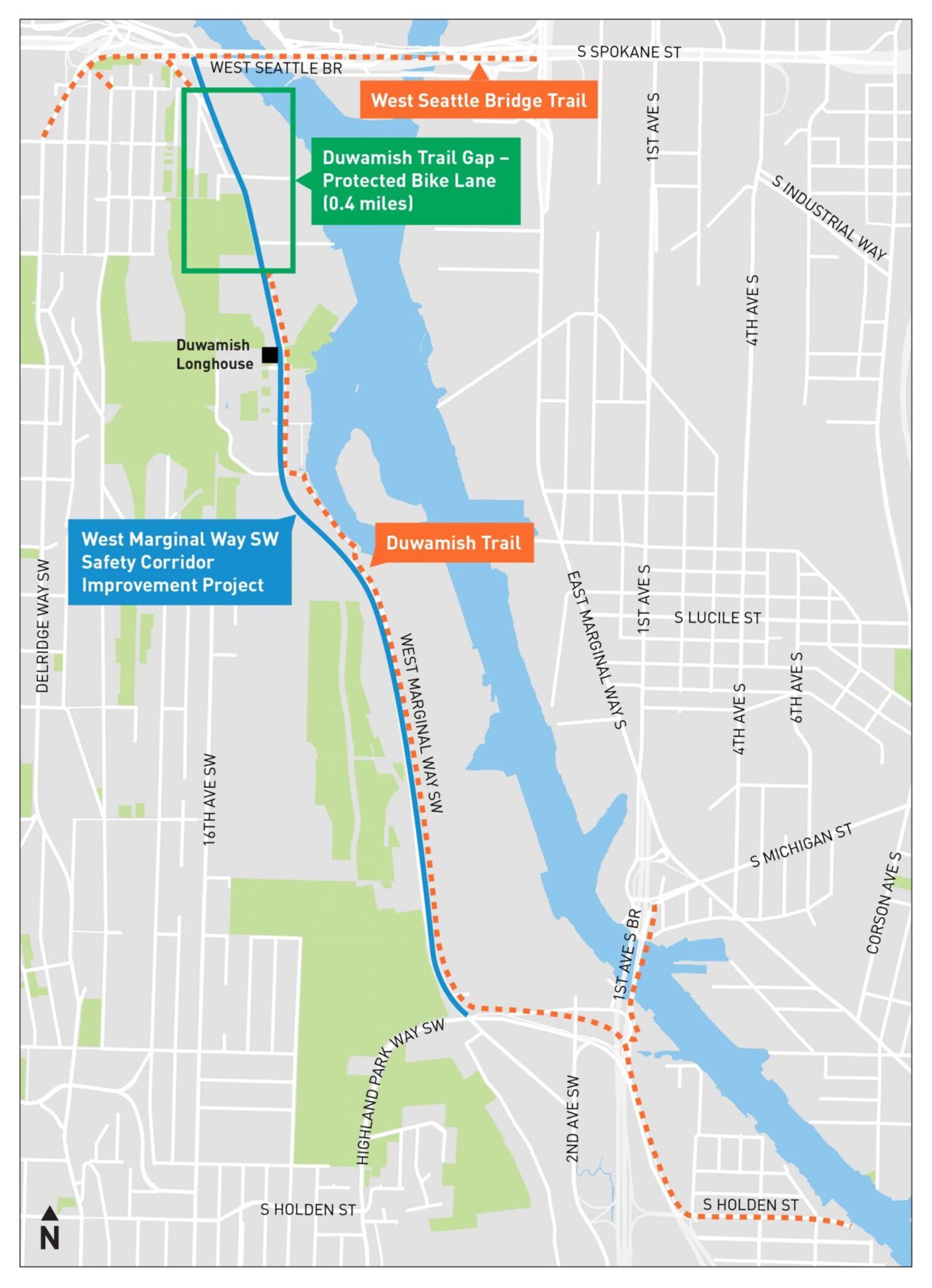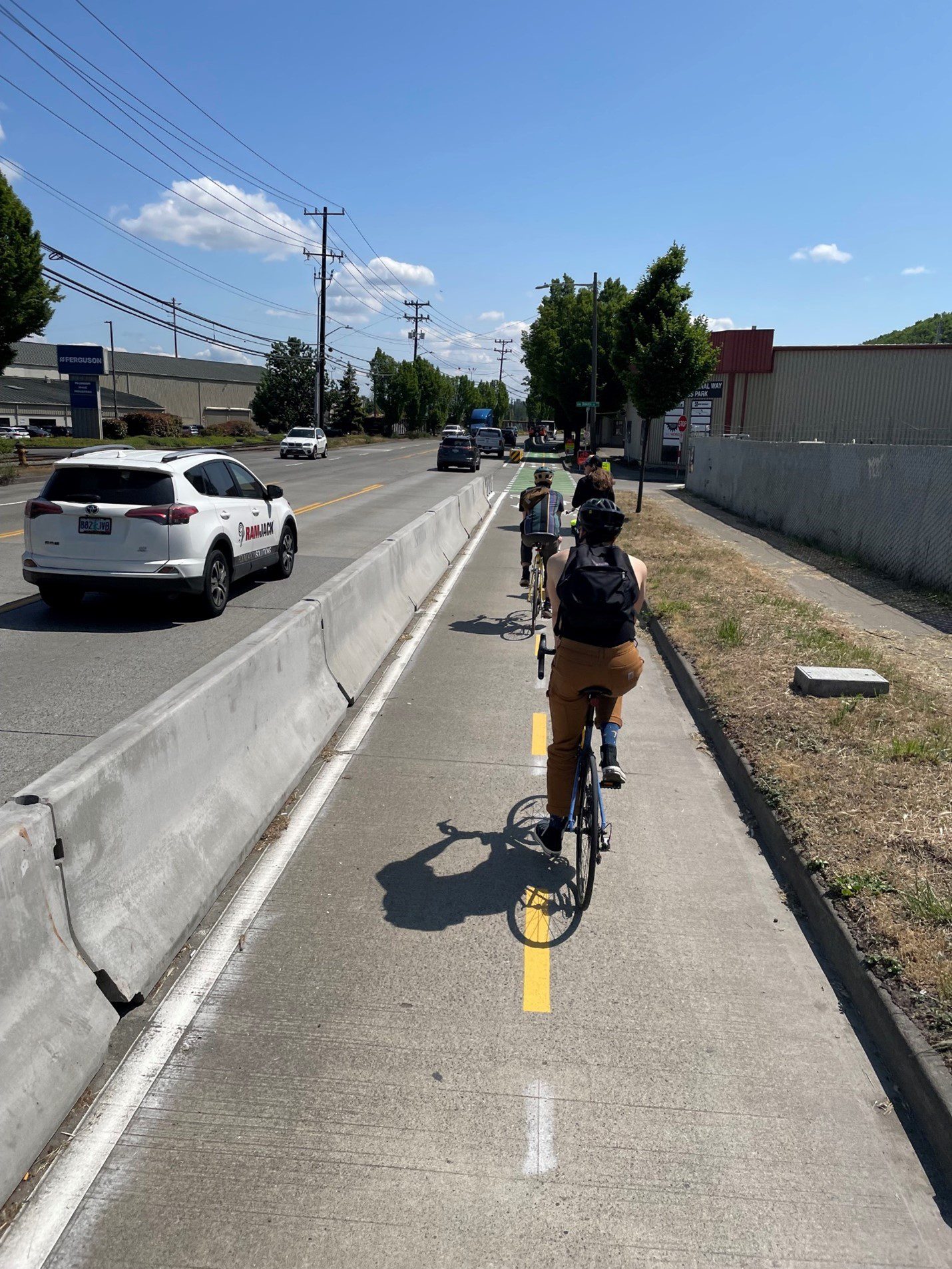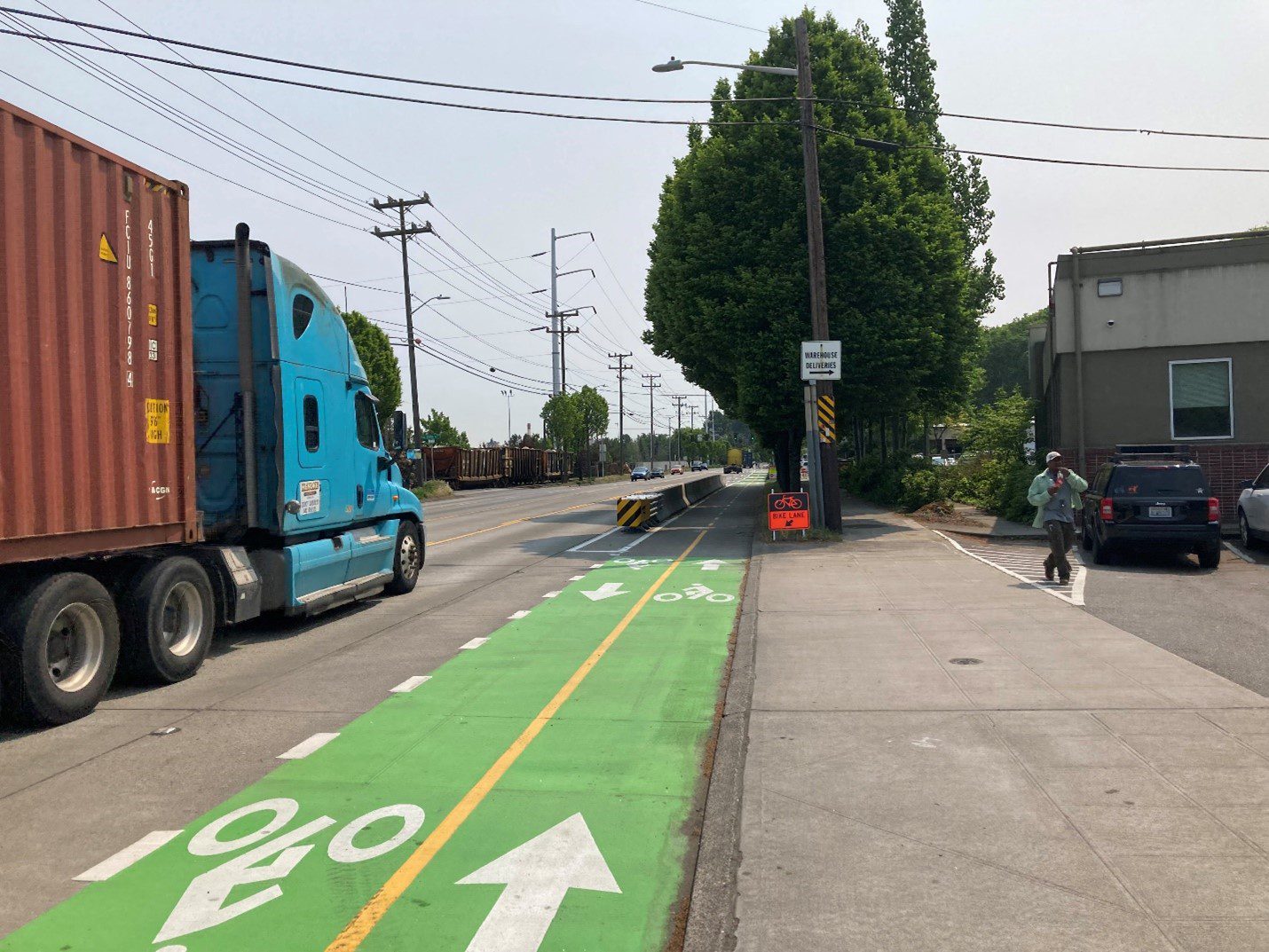 View of West Marginal Way SW and the protected bike lane at a driveway crossing, with the West Seattle Bridge in the background. Photo: SDOT.
View of West Marginal Way SW and the protected bike lane at a driveway crossing, with the West Seattle Bridge in the background. Photo: SDOT. Blog stats: 1,000 words | 5-minute read
At-a-glance:
- Improvements completed on West Marginal Way SW in May 2023 are making a real difference for people traveling along the street.
- Data collection focused on travel volumes, speeds, travel times, freight operations and movements, and travel conditions for people biking, walking, and rolling.
- Since installing the changes, we’ve seen a 53% increase in weekend biking, a 144% increase in weekday biking, and a more than 90% increase in people walking.
- Meanwhile, vehicle travel times—including freight—have increased by less than one second per trip, on average. Freight trucks continue to be able to reliably travel along the corridor, based on our analysis.
- Here’s a snapshot of our key takeaways:
- The new protected bike lane closed a gap in the Duwamish Trail network, providing more options for people biking, greater comfort, and more predictability.
- The project advanced our Vision Zero safety goals, by eliminating high-speed passing, achieving speeds closer to posted speed limits, improving sightlines at driveways and intersections, and providing more predictable space for all travelers.
- There were negligible effects to overall operations along West Marginal Way SW.
- The street accommodates existing and future freight traffic operations.
- Read on for detailed metrics from our latest data collection and evaluation.
- Additional details are also available in our after-study report and this presentation.
- For more background on this project, please see our spring 2023 blog post or visit the project web page.
Post-project results
The West Marginal Way SW Safety Corridor Project has led to several notable outcomes, including safety benefits for people biking, walking, rolling, and driving.

Travel volumes
- Biking:
- Since the project’s completion, bike volumes have seen a significant uptick.
- Weekend biking increased by 53%, while weekday biking surged by 144%.
- Since the project’s completion, bike volumes have seen a significant uptick.
- Walking, using a mobility assistance device, or scooter:
- The number of people walking or rolling has also risen since project completion.
- We’ve seen a 91% increase on weekends and a 96% increase on weekdays.
- The number of people walking or rolling has also risen since project completion.
- Driving:
- Daily traffic volumes on West Marginal Way SW have significantly decreased since the reopening of the West Seattle Bridge in September 2022.
- During the extended bridge closure, West Marginal Way SW volumes peaked at 33,500 vehicles per day.
- In January 2023, approximately 10,000 vehicles per day traveled on this street, and in August 2023 there were approximately 13,700 vehicles per day.

Supporting our Vision Zero efforts
This project closely aligns with our Vision Zero plan to end traffic deaths and serious injuries on city streets, and supports the recommendations from our 2023 Vision Zero Top-To-Bottom review.
This includes, but is not limited to:
- Redesigning arterial streets to create safer speeds, including reducing the number of travel lanes
- Building protected bike lanes
- Enhancing pedestrian crossings
- Increasing visibility at intersections

Speeds
- Vehicle travel speeds on West Marginal Way SW have seen a moderate decrease.
- We have taken steps to discourage and mitigate speeding, including lowering the speed limit to 30 MPH and installing real-time radar feedback signs.
- Though the corridor has a posted speed limit of 30 MPH, data collected revealed that median travel speeds of drivers still exceed that limit.

Travel times
- Southbound vehicle travel times have remained relatively consistent throughout the project. This demonstrates that the West Marginal Way SW protected bike lane (PBL) has had a negligible impact on travel times for drivers.
- There has been less than a one second increase in travel time as a result of the project.
Freight movements
- Truck volumes on West Marginal Way SW have decreased since August 2022.
- There has been a drop in the number of trucks turning in and out of driveways, as well as a decrease in truck volumes going to and from Harbor Island.
- From a traveler interaction analysis at the two highest volume driveways that cross the Duwamish Trail, less than four percent of recorded interactions included Duwamish Trail users. Each recorded interaction was rated on a 1-4 scale of severity based on criteria including speed, type of traveler, and time between two different travelers being in the same space. No interaction involving a person biking, walking, or rolling scored higher than a 3. The highest severity interaction occurred after a person rode a bike across the driveway and 1.9 seconds later a driver crossed the trail to exit the driveway.

Key takeaways
- The new protected bike lane closed a gap in the Duwamish Trail network, providing more options for people biking, greater comfort, and more predictability.
- The project advanced our Vision Zero safety goals, by eliminating high-speed passing, achieving speeds closer to posted speed limits, improving sightlines at driveways and intersections, and providing more predictable space for all travelers.
- There were negligible effects to overall operations along West Marginal Way SW.
- The street accommodates existing and future freight traffic operations.
What’s next?
In the next phase of the project, we’ll install new ADA-accessible curb ramps and a permanent sidewalk along the Duwamish Longhouse crossing. With the sidewalk, we will also install new curb bulbs at the intersection of SW Alaska St and at a new driveway exit for the Duwamish Longhouse Cultural Center.
Later, we will upgrade existing ADA-accessible curb ramps and install a new crosswalk at the SW Front St and West Marginal Way SW intersection. This intersection has the highest volume of drivers crossing the Duwamish Trail and we want to ensure all travelers are more aware of each other at this trail crossing.